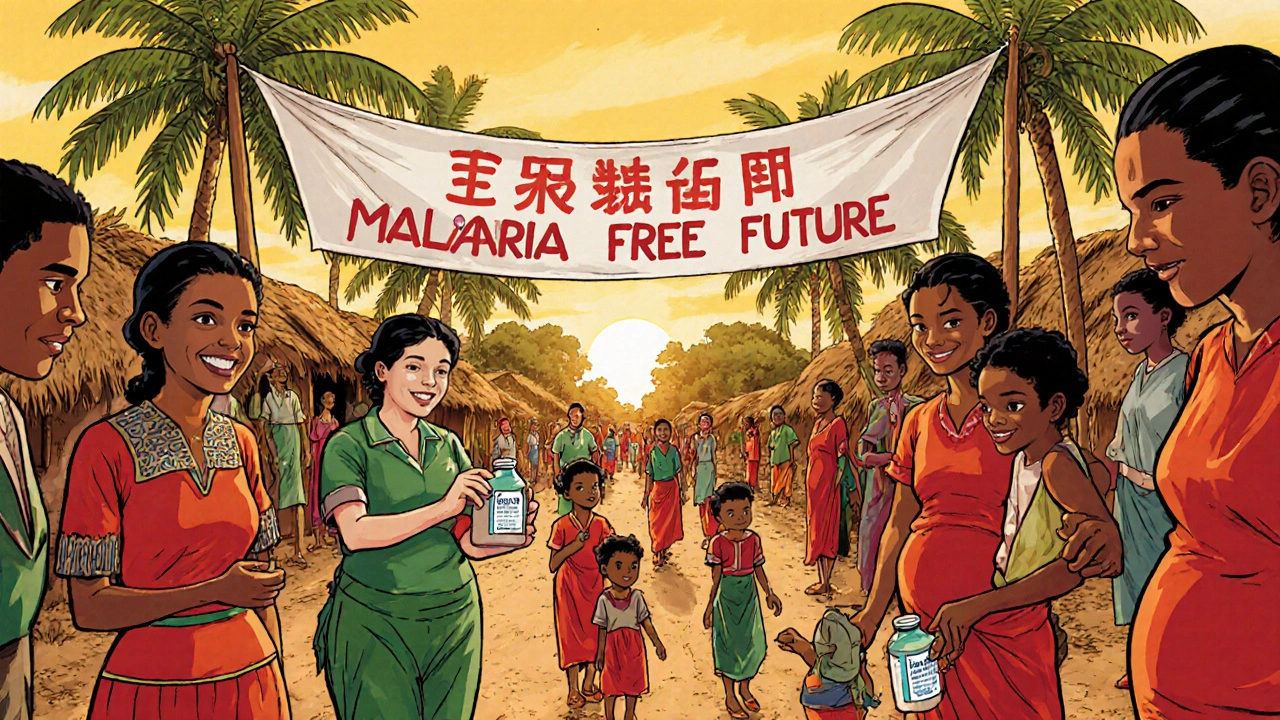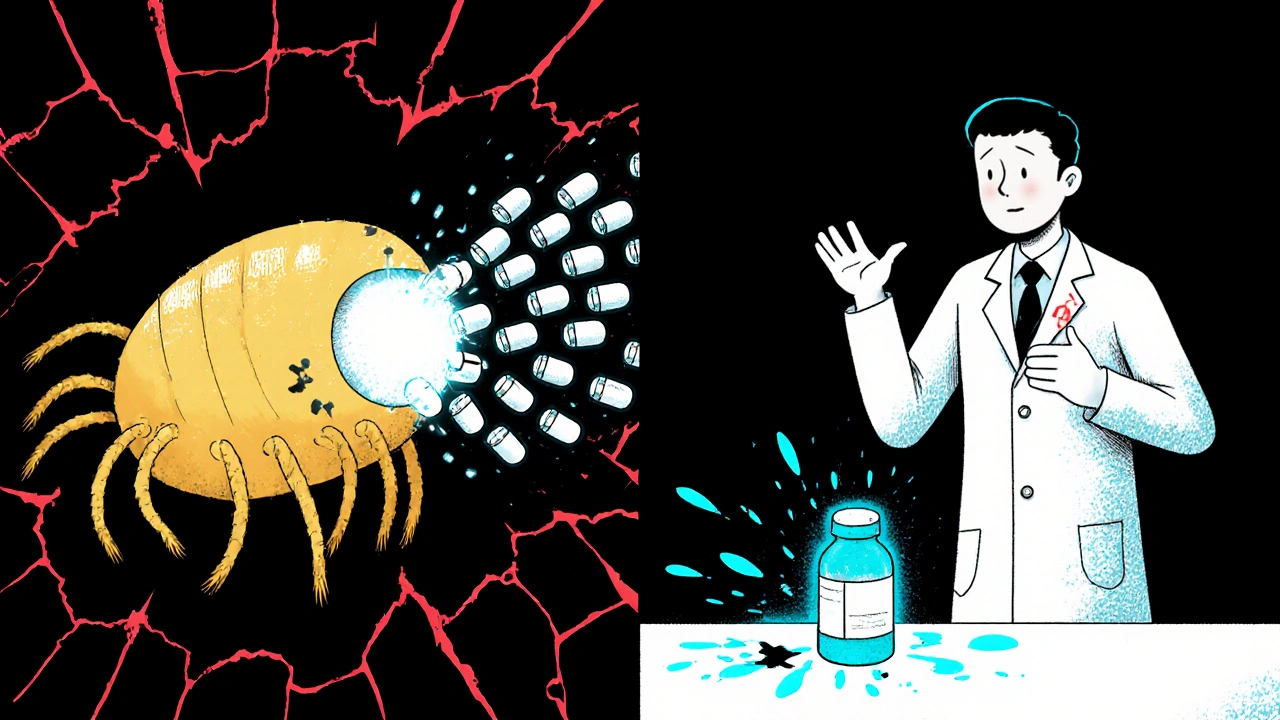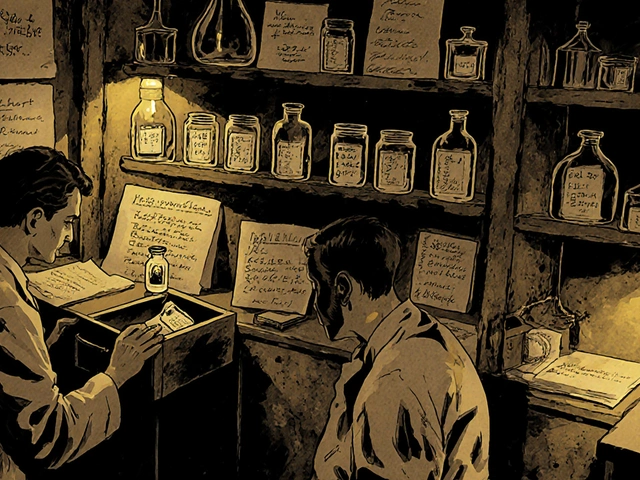Chloroquine phosphate didn’t start as a miracle drug. It began as a lab curiosity in the 1930s, a synthetic cousin to quinine, the bitter bark extract that had saved countless lives in tropical colonies. No one expected it to become the most widely used antimalarial in human history-until it did. For over 40 years, it was the go-to treatment, the cheap, simple solution that kept millions alive. Then came resistance. Then came controversy. And now, it’s a cautionary tale wrapped in a legacy.
From Quinine to Chloroquine: The Search for a Better Drug
Malaria has plagued humans for thousands of years. By the 1800s, quinine from the cinchona tree was the only reliable treatment. But it was hard to grow, expensive, and caused nasty side effects like ringing ears and nausea. When colonial powers needed to protect soldiers and settlers in Africa and Southeast Asia, they needed something better.
In 1934, German scientists at Bayer’s pharmaceutical labs synthesized a compound called resochin-a derivative of 4-aminoquinoline. It worked brilliantly in mice infected with malaria. But the lead researcher, Hans Andersag, dismissed it as too toxic. The compound sat in a drawer for nearly a decade.
Then came World War II. With Japan cutting off Allied access to cinchona plantations in Indonesia, the U.S. launched a massive effort to find synthetic alternatives. The U.S. Army’s Office of Scientific Research and Development revived resochin, retested it, and found the original toxicity claims were exaggerated. They renamed it chloroquine. By 1944, it was being mass-produced and shipped to troops in the Pacific.
Chloroquine Phosphate Takes Over the World
Chloroquine phosphate-the water-soluble salt form of chloroquine-was the version that made it to the public. It was stable, cheap to make, and could be taken as a single daily pill. Unlike quinine, it didn’t require multiple doses a day. It worked not just to treat malaria, but to prevent it too. By the 1950s, the World Health Organization launched global eradication campaigns built around chloroquine.
In places like India, Brazil, and sub-Saharan Africa, it became the backbone of public health. Children swallowed it in syrup form. Pregnant women took it to protect their babies. Farmers and miners took it weekly to keep working. In some countries, it was distributed for free through community health workers. At its peak, chloroquine phosphate was used by over 100 million people annually.
It wasn’t perfect. Some people got dizzy. Others had stomach upset. But compared to the risk of dying from malaria, those side effects seemed minor. For decades, chloroquine phosphate was the gold standard.

The Rise of Resistance: When the Miracle Stopped Working
By the late 1950s, signs of trouble appeared. In Southeast Asia, patients treated with chloroquine kept getting sick again. Their parasites weren’t dying. At first, doctors blamed poor adherence-patients not finishing their pills. But by the 1970s, it was clear: the malaria parasite, Plasmodium falciparum, had evolved.
Scientists discovered a mutation in the parasite’s pfcrt gene. This tiny change let the parasite pump chloroquine out of its digestive system before the drug could kill it. The mutation spread like wildfire. By the 1980s, chloroquine resistance was common in Thailand and Vietnam. By the 1990s, it was everywhere in Africa.
Doctors watched helplessly. Patients who had always responded to chloroquine now died. A drug that had saved millions became useless in the very places that needed it most. The WHO officially declared chloroquine obsolete for treating P. falciparum malaria in 2006. The era of the wonder drug was over.
Chloroquine in the Modern Era: A Shadow of Its Past
Chloroquine phosphate didn’t vanish. It just changed roles. In regions where Plasmodium vivax is still common-like parts of Latin America and South Asia-it remains effective. That strain hasn’t developed widespread resistance. So chloroquine is still used, but only in specific cases.
It also became a backup for travelers. If someone visits a country with low resistance, like parts of the Middle East or Central America, doctors might still prescribe it for prevention. But everywhere else, artemisinin-based combination therapies (ACTs) are the standard. These newer drugs combine fast-acting artemisinin with longer-lasting partners like lumefantrine or mefloquine. They’re more expensive, but they work.
Chloroquine also found a second life in rheumatology. Its anti-inflammatory properties made it useful for lupus and rheumatoid arthritis. Even today, some patients take low-dose chloroquine phosphate for these conditions. It’s not a cure, but it helps control flare-ups. That’s the only major medical use left.

The COVID-19 Controversy: When Hope Outran Science
In early 2020, as the world scrambled for any treatment against COVID-19, chloroquine phosphate resurfaced. Early lab studies showed it could block the virus in petri dishes. Some small, poorly designed human trials suggested benefit. Politicians and media outlets jumped on it.
Within weeks, governments stockpiled it. Pharmacies ran out. People took it without prescriptions. One U.S. man died after ingesting a fish tank cleaner containing chloroquine, mistakenly believing it was the same thing.
By mid-2020, large, rigorous studies-including one published in The Lancet and another by the WHO’s Solidarity Trial-showed no benefit. Worse, chloroquine increased the risk of dangerous heart rhythms. The FDA revoked its emergency use authorization. The hype collapsed. It was a stark reminder: just because a drug worked for one disease doesn’t mean it works for another.
Legacy and Lessons
Chloroquine phosphate changed medicine. It proved synthetic drugs could outperform natural ones. It showed how mass distribution could crush a disease. And it showed how quickly nature can fight back.
Today, researchers still study chloroquine’s structure to design new antimalarials. Some new compounds mimic its shape but evade the parasite’s resistance pump. Others combine chloroquine with resistance-breakers to revive its power. But none have matched its simplicity or scale.
Its story isn’t just about science. It’s about hubris. We thought we’d beaten malaria. We didn’t. We thought we could use one drug forever. We were wrong. And we paid the price in lives.
Chloroquine phosphate is no longer the hero it once was. But it’s still a teacher. It reminds us that drugs aren’t magic. They’re tools-and tools wear out. The real breakthrough isn’t finding a new pill. It’s understanding how to use them wisely, and when to stop.


Dale Yu
Chloroquine wasnt even good to begin with and now we got people dying from fish tank cleaner because some idiot on TV said it cures everything
May Zone skelah
Let me tell you something about the history of pharmaceutical hubris - chloroquine wasn't just a drug, it was a colonial fantasy dressed in white coats. The West didn't just discover it, they weaponized it, dropped it into African villages like candy, assumed immunity was a myth, and then when the parasites evolved - which they always do, because evolution doesn't care about your Nobel Prize - we acted shocked. We treated nature like a vending machine: insert dollar, get cure. But biology doesn't take credit cards. It takes humility. And we had none. The real tragedy isn't the resistance - it's that we thought we were smarter than the malaria parasite. Spoiler: we weren't. We're the ones who needed the lesson, not the parasite.
Kshitij Nim
In India we still use chloroquine for vivax malaria - works fine if you're not in a resistance zone. But yeah, the falciparum thing? Total disaster. We lost too many people before ACTs came in. Still, it's crazy how one molecule changed global health for half a century. And now we're back to square one with new drugs costing ten times more. Not fair for the poor.
Scott Horvath
man i remember when my grandpa used to take chloroquine every week when he worked in the philippines back in the 60s he said it made him feel kinda dizzy but he'd rather be dizzy than dead
Armando Rodriguez
The story of chloroquine is a profound illustration of the delicate balance between scientific optimism and biological reality. It demonstrates that technological advancement, while powerful, must be tempered with ecological awareness and long-term stewardship. The rise and fall of this compound underscores the necessity for adaptive, context-sensitive public health strategies rather than one-size-fits-all solutions.
jennifer sizemore
I think what's so heartbreaking is how much good it did before everything fell apart. It saved so many kids. So many mothers. And then we just... moved on like it never mattered. We need to honor that legacy even as we move forward.
matt tricarico
Chloroquine was never a miracle. It was a temporary bandage on a bullet wound. The real miracle would've been investing in mosquito nets and sanitation instead of chasing chemical shortcuts. But no - we wanted the pill. We always want the pill. Because pills are easier than changing human behavior.
Kimberly Ford
For anyone reading this - if you're in a region where chloroquine is still effective for vivax, don't skip doses. Resistance doesn't just appear. It grows from missed pills, half-courses, and people thinking 'I feel fine, I don't need the rest.' That's how we lost it. Don't repeat the mistake.
jerry woo
Chloroquine was the opioid of antimalarials - shiny, easy, addictive to governments, and then the whole house of cards collapsed when the addiction outpaced the science. And now we're all sitting here with ACTs that cost a month's rent and a doctor's note just to get a prescription. Meanwhile, the parasites are laughing. They've been playing chess while we were playing tic-tac-toe.
Jillian Fisher
So... does that mean the pfcrt mutation is still spreading? Or did it stabilize?
Rachel Marco-Havens
People took chloroquine for COVID because they were too lazy to wash their hands or wear masks. That's not science. That's moral failure. And now we have dead people who thought fish tank cleaner was medicine because they believed in magic pills instead of common sense. Shame on us.
Kathryn Conant
We don't need another miracle drug. We need a system that doesn't treat medicine like a commodity. Chloroquine was cheap because we made it cheap - not because we cared. The real revolution isn't in the lab. It's in who gets to live and who gets left behind.